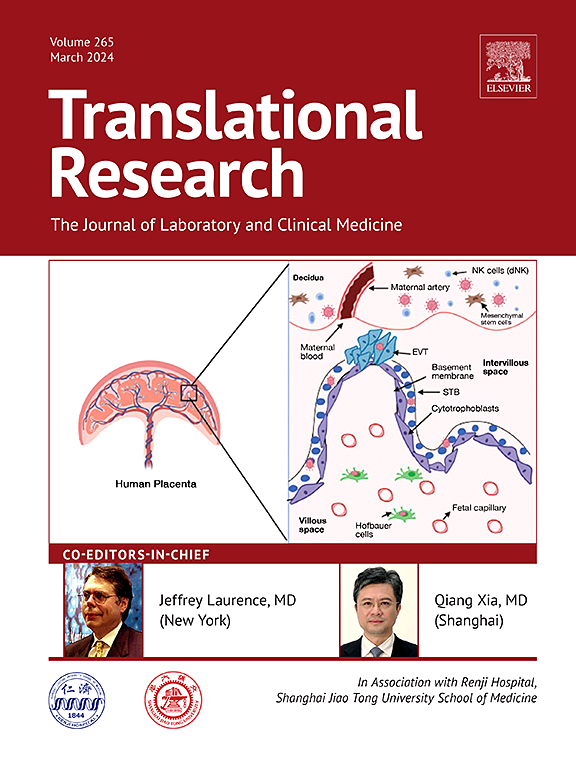Modeling diabetic epitheliopathy using 3D-Organotypic corneal epithelium
IF 5.9
2区 医学
Q1 MEDICAL LABORATORY TECHNOLOGY
引用次数: 0
Abstract
Diabetic keratopathy (DK) is a degenerative corneal disease occurring in more than 50 % of diabetic patients. DK is correlated with the hyperglycemic state causing morphological and functional changes in corneal layers. Currently, most studies on the cornea are performed on two-dimensional (2D) cultures in vitro or animal models. Although 2D culture models can provide large amounts of data at low cost, they poorly represent the complex pathophysiology of the human cornea and hardly predict in vivo responses that can be achieved with animal model studies. However, the use of the latter presents ethical problems. Therefore, it is necessary to identify new strategies and models that can integrate the information validly and effectively, to reduce the number of animals used. Here, we used human corneal epithelial cells (hCECs) derived from donor cornea differentiated into three-dimensional (3D)-organotypic air-liquid interface (ALI), which resemble the features of the corneal epithelium. The 3D-organotypic ALI corneal epithelium was subjected to high-glucose conditions to generate a model of diabetic epitheliopathy. Our model showed well-established molecular and cellular characteristics of this pathology, such as epithelial defects and inflammation, with increased expression of IL-1β, TNF-, p-NF-kB, COX-2, MMP-2 and MMP-9. The data provided highlight the utility of 3D-organotypic corneal epithelium in modeling diabetic epitheliopathy, offering new avenues in drug screening, as well as in precision and personalized medicine.
利用3d器官型角膜上皮建立糖尿病上皮病变模型。
糖尿病性角膜病变(DK)是一种退行性角膜疾病,发生在50%以上的糖尿病患者中。DK与高血糖状态引起的角膜层形态和功能改变有关。目前,大多数关于角膜的研究都是在体外二维培养或动物模型上进行的。尽管2D培养模型可以以低成本提供大量数据,但它们很难代表人类角膜复杂的病理生理,并且很难预测动物模型研究可以实现的体内反应。然而,后者的使用带来了伦理问题。因此,有必要确定新的策略和模型,可以有效地整合信息,以减少动物的使用数量。在这里,我们使用来自供体角膜的人角膜上皮细胞(hCECs)分化成三维(3D)-器官型气液界面(ALI),其特征与角膜上皮相似。将3d器官型ALI角膜上皮置于高糖条件下,生成糖尿病上皮病模型。我们的模型显示了这种病理的分子和细胞特征,如上皮缺陷和炎症,IL-1β、TNF-α、p-NF-kB、COX-2、MMP-2和MMP-9的表达增加。所提供的数据强调了3d器官型角膜上皮在糖尿病上皮病变建模中的效用,为药物筛选以及精确和个性化医疗提供了新的途径。
本文章由计算机程序翻译,如有差异,请以英文原文为准。
求助全文
约1分钟内获得全文
求助全文
来源期刊

Translational Research
医学-医学:内科
CiteScore
15.70
自引率
0.00%
发文量
195
审稿时长
14 days
期刊介绍:
Translational Research (formerly The Journal of Laboratory and Clinical Medicine) delivers original investigations in the broad fields of laboratory, clinical, and public health research. Published monthly since 1915, it keeps readers up-to-date on significant biomedical research from all subspecialties of medicine.
 求助内容:
求助内容: 应助结果提醒方式:
应助结果提醒方式:


